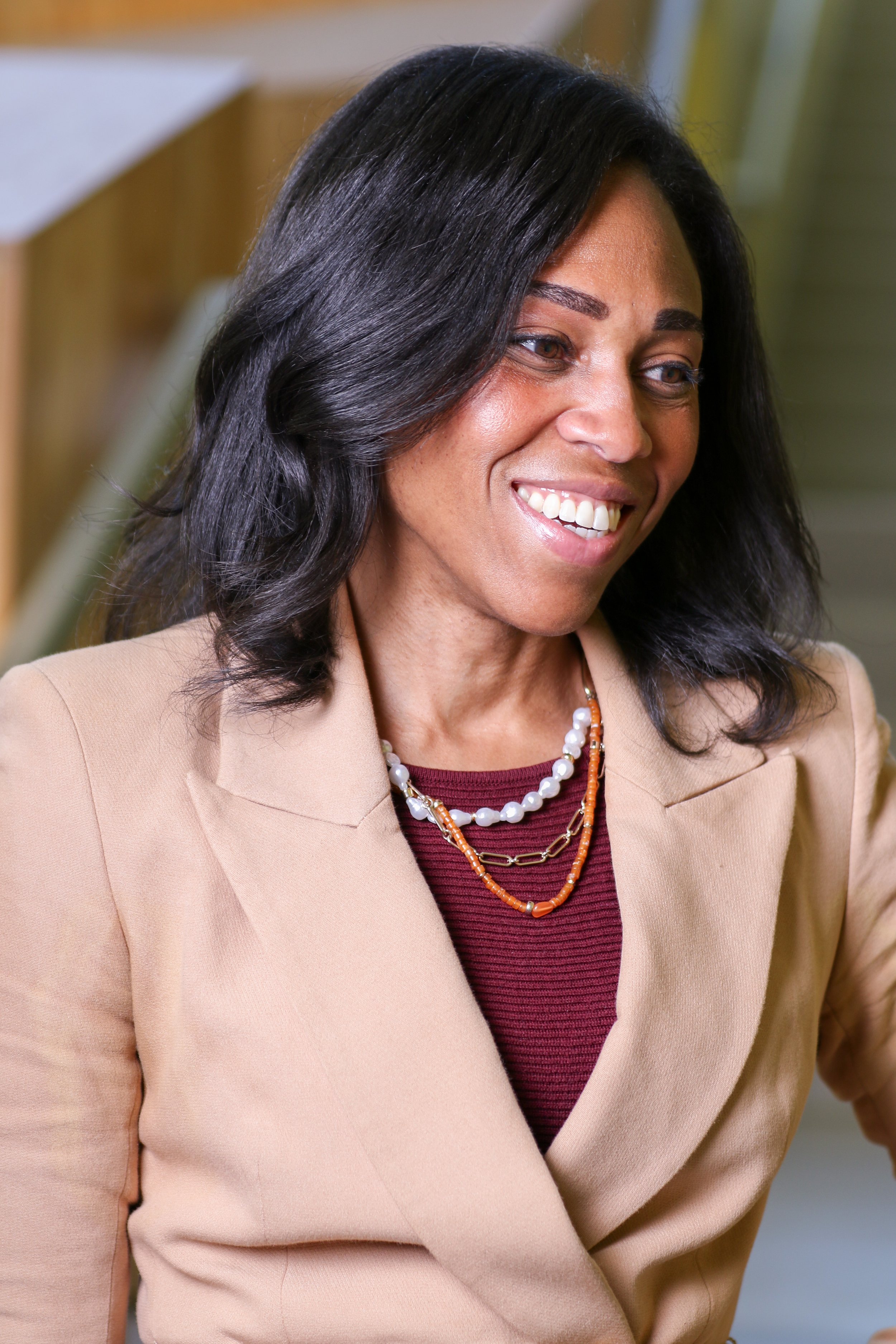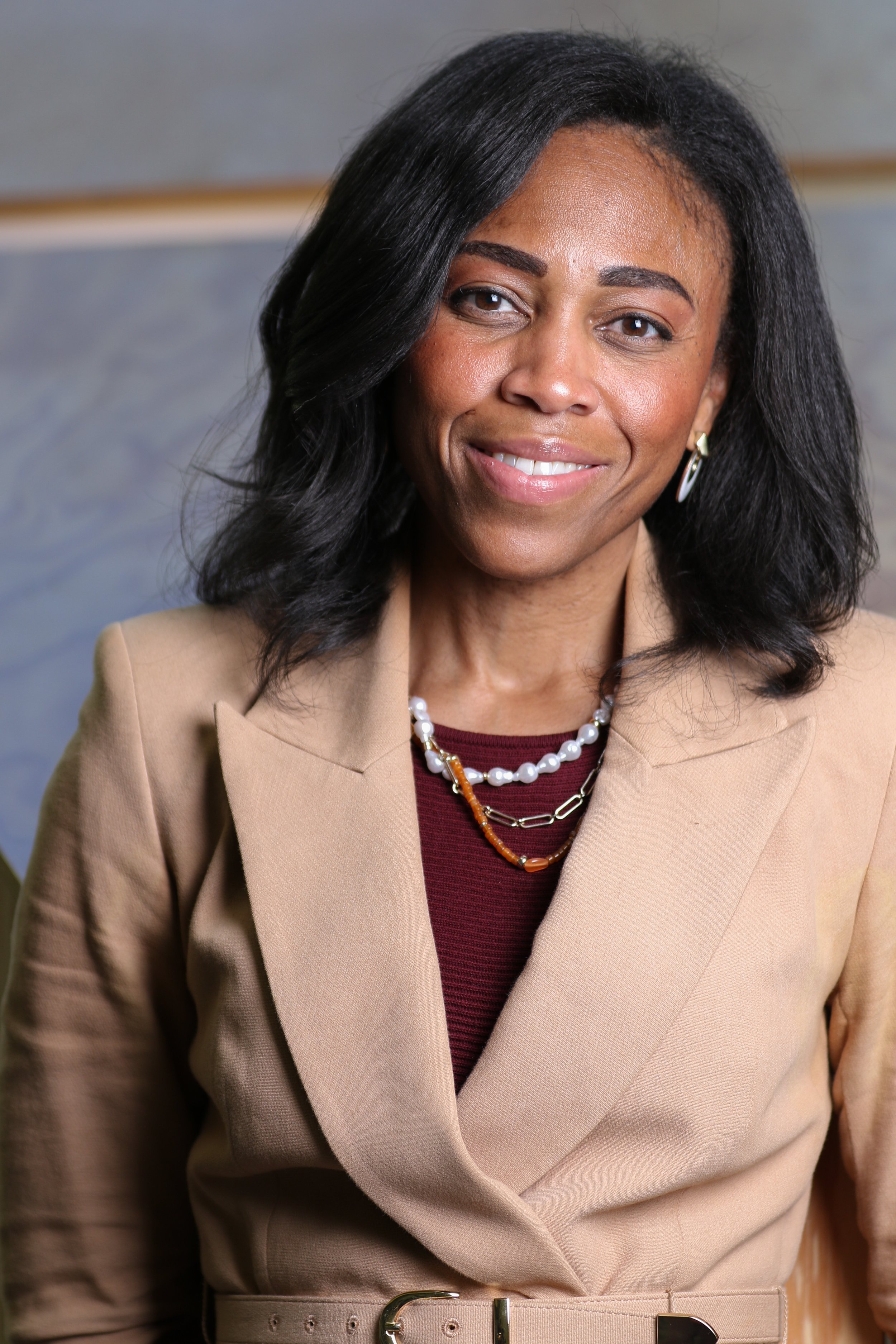From Passion to Presidency
Cebelihle Hlatshwayo | Arts & Entertainment Editor



AN Insight into Ashanti Blaize- Hopkins’ unpredictable path to becoming the President of the SPJ and the new Associate interim Dean of the Center for Media and Design
Ashanti Blaize-Hopkins isn’t content with just occupying a seat at the table. She's set on building one that echoes a legacy of positive change.
In October of this year, she took the helm as the first Black woman ever elected to President of the Society of Professional Journalists (SPJ). Now, the Emmy Award-winning journalist, producer, educator, author, higher education equity consultant, public relations expert, and faculty adviser for The Corsair has recently added another title to her impressive career as the new associate interim dean of the Center for Media and Design (CMD) campus at Santa Monica College (SMC).
Her accomplishments paint a picture of a focused, driven woman who has always known her purpose and dedicated her life to achieving it. However, her journey to success was marked by unexpected detours. Blaize-Hopkins began her journey of self-discovery at the tender age of 17 on the steps of Columbia University in New York City. She wanted to be a lawyer to do her part in making a meaningful difference in people’s lives by becoming a Supreme Court Attorney. But, after an introductory political science course and a heart-to-heart with an alumn from her high school, Norfolk Academy in Virginia, she was set on a road of uncertainty that led her to change her major a total of 6 times.
After settling on sociology as a major in her junior year, without having a clear picture of what she could do with it, she gave herself a weekend to research and decide on a career path. After, she secured an interview with the Women’s Media Group, a nonprofit organization in New York City dedicated to placing qualified female interns in media-related positions. Blaize-Hopkins was assigned to work at ABC News that summer in New York. “I had an amazing experience, and I was like, this is what I want to do. This is where I want to be,” she said.
In her senior year, she enrolled in a public speaking course. Towards the end of it, her professor mentioned an oratory competition at Columbia, suggesting she participated. Though initially disinterested, the incentive of a cash prize caught her attention. Entering the contest, she secured a victory, earning the George Curtis Prize in public speaking and a $2,000 reward.
“So then I thought, ‘maybe I can marry this newfound love of public speaking and sociology and understand more about why people do what they do and how external factors impact their lives.’ Then it hit me. That’s journalism,” she said.
Upon completing her master of arts in journalism at the University of Miami, Blaze-Hopkins embarked on a nearly 2,000-mile journey to El Paso, Texas, where she landed her first on-air role as a morning reporter for the local Fox TV station. “I interviewed over the phone, and I accepted the job without ever visiting in person,” she said.
As Blaize-Hopkins reflected on the past ten years of her career, she marveled at the unexpected opportunities that have emerged. She said her journey has taught her how being open to more than she originally dreamed about has paved the way for her success. Although different from what her 17-year-old self had imagined, her career has stayed true to her initial goal of positively impacting her community.
Her professional experiences range from earning an Emmy for News Reporting at CBS Las Vegas by covering the gripping story of a teenage girl and her father trapped in war-torn Beirut to finding her passion as an educator in Dallas, TX, after mentoring a student intern at Richland College. These diverse experiences paved the way for an impressive career in education, start- ing at Loyola Marymount University as an assistant director of Student Media and progressing through roles at several prestigious colleges, to ultimately becoming the faculty adviser for Santa Monica College campus newspaper, The Corsair.
These career-defining moments also significantly changed her personal life. They led her to venture into the business world, co-founding "Get Media PR," a company based in Dallas, TX, and Los Angeles, CA, specialising in public relations and video production. Perhaps most significantly, these experiences also introduced her to a fellow journalist who eventually became her husband, marking the start of a new chapter that ushered her into motherhood.
Blaze-Hopkins admitted that, despite her many accomplishments, imposter syndrome has been a constant companion in her career. She finds inspiration from Michelle Obama, the former First Lady of the United States, and her concept of "creating a kitchen table," presented in Obama's memoir "The Light We Carry."
“My kitchen table is very solid. My husband is my best friend, and I bounce everything off him. When I’m having those feelings of not being enough or not feeling like I can live up to expectations, I check in with someone at my kitchen table because I know they will tell me the truth and give me a pep talk when needed, and remind me that the negative voice in my head isn’t real. They help me silence those doubts that linger each day, questioning whether I’m on the right path or capable. It’s a constant battle against self-doubt,” said Blaze-Hopkins.
She stressed the importance of taking a moment to recognize that trial and error is the foundation of gained wisdom. She hopes to implement these lessons in her two new roles. When discussing her goals as the SPJ president, Blaize-Hopkins intends to continue the work she started as vice president of the SPJ.
Blaize-Hopkins aims to make SPJ more influential by advocating for policies like California Senate Bill 98. This bill, supported by SPJ and many media organizations, helped ensure the safety and sustainability of journalism, as seen in the documentary "Flashpoint: Protests, Policing, and the Press," where she is featured. She also wants to increase diversity within SPJ by creating opportunities for people of different races and ethnicities, reflecting the diverse voices in the communities served.
“As we're seeing more newsrooms lay off journalists and close their doors, and the rise of misinformation and manipulation of accurate information, the moment calls for organisations like SPJ to lead and advocate for our industry's sustainability, and for the journalists that go out there and make that first draft of history. If journalism and journalists go away, our democracy is not far behind, and that's what's at stake. This role means so much more than just being the president of a nonprofit because this organization has the op- portunity to help save our industry,” she said.
Blaize-Hopkins believes that these organizations should encourage lawmakers to recognize the need for better media literacy in the early years of education so to cultivate a new generation of well-informed and discerning audiences.
As she steps into her new position as associate dean, she is shifting her focus from an outstanding six-year tenure at SMC, where she not only led The Corsair newspaper to unprecedented success but also inspired budding journalists. Leveraging her extensive teaching background and skills honed in her journey, she aims to bring a compassionate approach to embrace the challenges and opportunities in her new role.
‘I am my ancestor’s wildest dreams,’ said Blaize-Hopkins.
“Being a tenured professor, president of SPJ, associate dean of the CMD, and achieving so much, I recognize that these achievements should have been out of my reach. It makes me feel like everything my ancestors endured was not in vain, so I always have them in my mind. If I’m going to do these things, I have to be impactful; otherwise, I’d be dishonoring their legacy.”
As we wrap up the interview, sharing a laugh about how unimpressive her accomplishments are to her two children, she sits almost unassumingly in the face of her accomplishments, which seem nearly too vast and impactful to fit in this tiny space with her.
Surrounding her are pictures of the people she mentioned were part of her kitchen table, and it becomes clear that every element of her success is present in the room. Her unwavering support system, deep respect for her ancestors' legacy, and commitment to serving others form the bedrock of building her new seat at the table.



At 10 a.m., Associated Students announced 2025-26 election results, including two contested positions and a controversial legislative initiative.